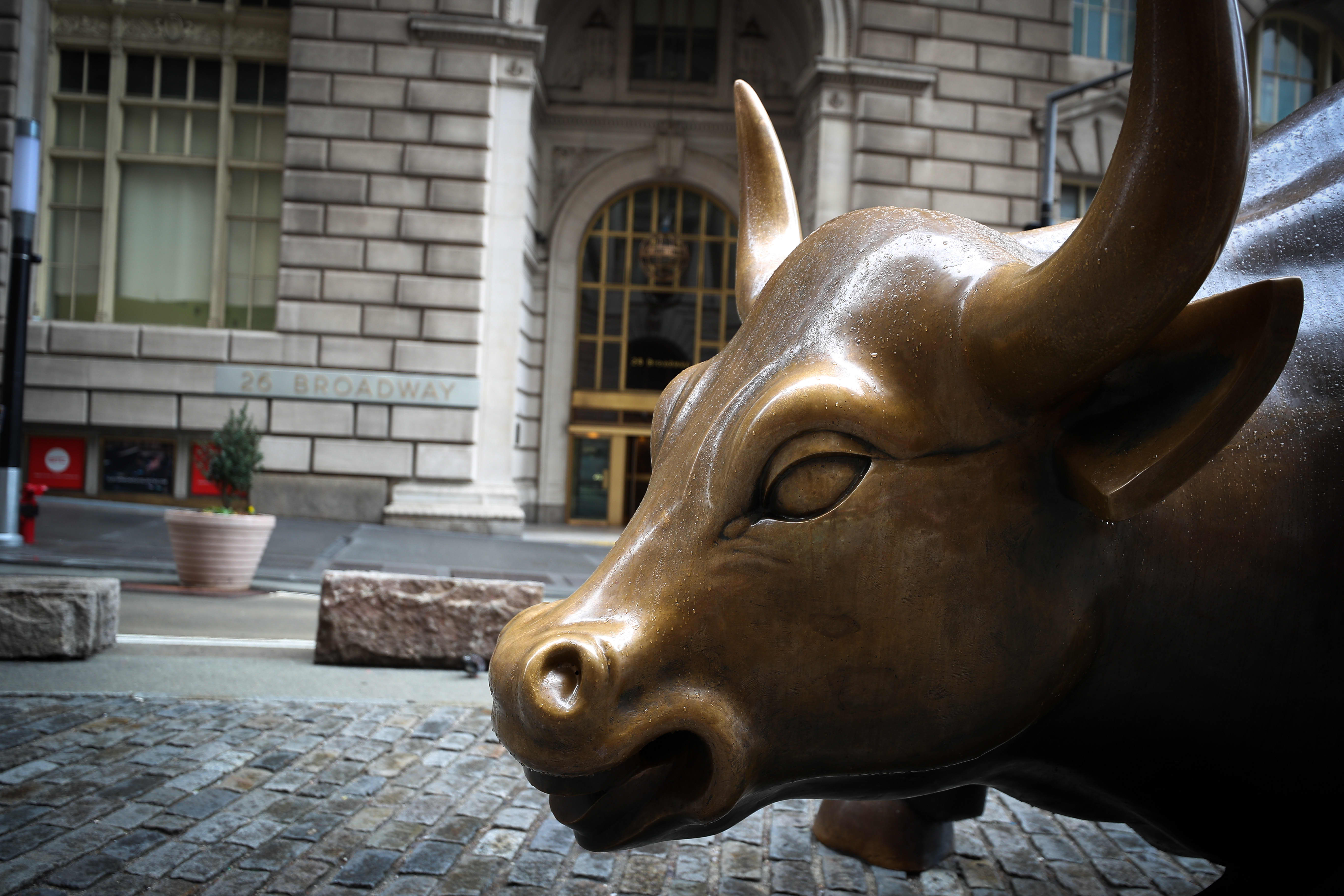Charging Bull Statue is seen at the Financial District in New York City, United States on March 29, 2020.
Tayfun Coskun | Anadolu Agency | Getty Images
The week started with a roar.
At the open Tuesday, the S&P 500 was up almost 10% for the week. Investors were positively giddy about three events: 1) the possibility of a peak in infections in the next few weeks, 2) the possibility the number of deaths may not be as great as feared, and 3) the immense stimulus still under discussion in Japan, the European Union, and the United States.
But we seem to have run out of steam — the S&P gave up a 90-point gain today. What’s up?
Remember all those strategists who were screaming a week ago that this was the buy of a lifetime? Maybe, but it’s getting a lot harder to get excited about cheap prices. We have gone from dramatically oversold to no longer oversold, at least on a short-term level.
The risk reward balance has changed dramatically because of the size of the moves. A lot of companies are nearly back to where they were before things started dropping fast at the end of February.
Walmart is up 4% since markets started falling apart after February 20th. Verizon is only down 2%, Merck is down 3%, Microsoft is down 8% and 3M is down 8%.
What about the broad market — are we in a bear market or bull market? It looks like both.
Bull market or bear market?
Bull market: Feb. 19
Bear market: March 23 (down 35%)
Bull market?: April 6 (20% off low)
Why this giddy rally — 20% off the lows in two weeks — in the face of what will likely be a recession far more serious than 2008-2009? The market has gone from despair and helplessness, to the realization that social distancing is working, but it has also come to the realization that the Federal Reserve — and the arrayed forces of global central banks — cannot be defeated, at least not in the long run, and they are smarter and even more aggressive than they were in 2008.
It helps that no less a figure than Larry Kudlow has gone a long way to bolster this mythology around the Fed, claiming today that the Fed had the “ultimate bazooka.”
All this bluster has left veteran traders throwing up their hands.
“We have a potpourri of forces here, and we know who is going to win — the Fed is going to win,” Joe Zicherman, a veteran Morgan Stanley trader who now runs his own money, told me. “Kudlow says the Fed is sitting with the ultimate bazooka. Do you want to fight that? I don’t think so.”
While many can bemoan the death of capital markets, at least it has helped strategists start to get a grip around the extent of the decline in earnings we may be facing in 2020.
Don’t get me wrong: They have gone from clueless to only mildly clueless, but most are now coalescing around declines of roughly 20% to 30% for S&P earnings in 2020:
Strategists on 2020 S&P earnings (from 2019 earnings):
Goldman Sachs: down 33%
Credit Suisse: down 29%
Citigroup: down 24%
Morgan Stanley: down low teens to 20%
“Second quarter will be the trough quarter, and typically markets bottom in the trough quarter,” Morgan Stanley’s Mike Wilson said on our air today. He also noted the market was looking forward to a strong earnings rebound in 2021.
All that is helpful, but we are still looking for a bottom, and it is not at all clear we are there. And every day we rally 3% or more makes it a little easier for bears to push back.
If the idea that we are going to close higher every day seems too good to be true to you, congratulations. You’re listening to the markets.
